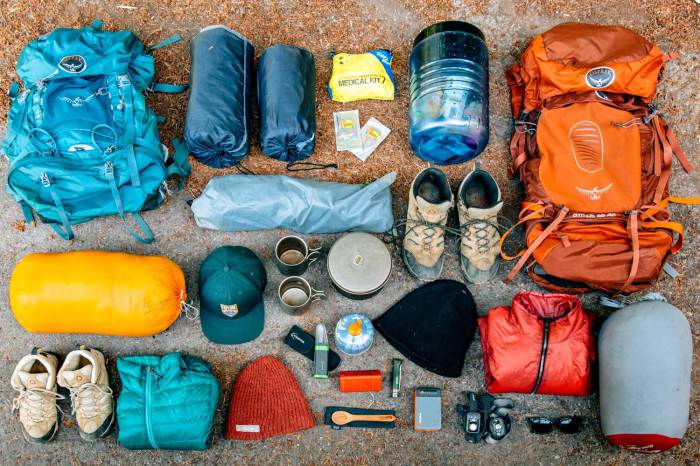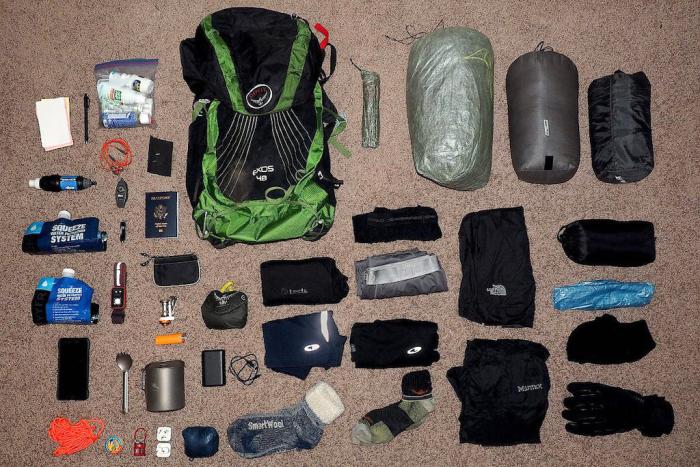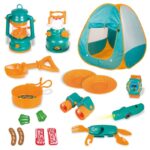Backpacking Camping Gear: Mastering the art of backpacking hinges on selecting the right equipment. From backpacks that comfortably carry your essentials to tents that provide shelter from the elements, every piece plays a crucial role in a successful and enjoyable adventure. This comprehensive guide dives deep into choosing the optimal gear, ensuring your next backpacking trip is unforgettable – and comfortable.
We’ll cover everything from backpack selection and tent options to sleeping gear, cooking systems, and clothing choices. We’ll also delve into essential safety precautions, navigation techniques, and the importance of Leave No Trace principles to minimize your environmental impact. Get ready to elevate your backpacking game with this detailed exploration of essential gear and best practices.
Backpack Selection: Backpacking Camping Gear

Choosing the right backpack is paramount for a comfortable and successful backpacking trip. The wrong backpack can lead to back pain, discomfort, and ultimately, a ruined adventure. Understanding the differences between backpack types and finding the perfect fit are crucial steps in planning your journey. This section will delve into the key aspects of backpack selection, equipping you with the knowledge to make an informed decision.
Internal Frame vs. External Frame Backpacks
The choice between an internal frame and an external frame backpack depends largely on your backpacking style and preferences. Internal frame backpacks have a lightweight, flexible frame integrated within the pack itself, providing excellent weight distribution and a snug fit against your back. They tend to be more comfortable for longer trips and offer better maneuverability in dense forests or rocky terrain.
External frame backpacks, on the other hand, feature a rigid external frame that supports the load. This design offers better ventilation and easier access to gear, but can be less comfortable and more cumbersome to carry, particularly in tight spaces. Internal frame backpacks have become significantly more popular due to advancements in materials and design, leading to greater comfort and weight distribution capabilities.
Comparison of Popular Backpack Brands
The following table compares three popular backpacking backpack brands, highlighting key features, weight, and price range. Note that specific models within each brand will vary, and these are general estimations based on common offerings. Always check the specifications of individual backpacks before purchasing.
| Brand | Features | Weight Range (lbs) | Price Range (USD) |
|---|---|---|---|
| Osprey | Durable, comfortable fit, adjustable suspension, excellent ventilation, various sizes and capacities | 2-6 | 150-400 |
| Gregory | High-quality materials, ergonomic design, customizable fit, ample storage, durable construction | 2.5-7 | 175-450 |
| Deuter | Innovative designs, comfortable carrying systems, durable materials, excellent ventilation, wide range of sizes | 2-6.5 | 160-420 |
Backpack Fit and Adjustment, Backpacking Camping Gear
Proper backpack fit is crucial for comfort and injury prevention. An ill-fitting pack can lead to shoulder, back, and hip pain, significantly impacting your enjoyment of the trip. Look for backpacks with adjustable torso length, hip belts, and shoulder straps. The hip belt should sit comfortably on your hips, transferring the majority of the weight from your shoulders.
The shoulder straps should be snug but not constricting, and the pack should sit close to your back without excessive gaps. Professional fitting at an outdoor gear store is highly recommended to ensure a proper fit before committing to a purchase. Consider the pack’s weight distribution system; a well-designed system will significantly reduce strain on your body. For instance, a well-designed hip belt distributes weight effectively to your hips, reducing strain on your shoulders and back.
Efficient Backpack Packing
Efficient packing maximizes space and minimizes weight, crucial for backpacking. Heavier items should be packed closest to your back, near the hip belt, for optimal weight distribution. Lightweight, less frequently used items should be placed at the top. Use compression sacks to reduce bulk and keep items organized. Roll your clothing instead of folding to save space and prevent wrinkles.
Utilize every available pocket and compartment. Consider using packing cubes to further organize and compress your belongings. For example, you can place your sleeping bag in a compression sack at the bottom of the pack, followed by heavier items like food and cooking equipment. Lighter items like clothing and toiletries can be placed at the top. This method keeps the weight centered, preventing the pack from swaying excessively.
Tent Options

Choosing the right tent is paramount for a successful backpacking trip. The wrong tent can lead to discomfort, sleep deprivation, and even safety risks. Understanding the different types available and their respective strengths and weaknesses will empower you to make an informed decision that aligns perfectly with your needs and the specific conditions you’ll encounter on the trail.
This section will delve into the critical aspects of tent selection, helping you avoid costly mistakes and ensure a comfortable and safe outdoor experience.
Dome Tents, Backpacking Tents, and Tarp Shelters: A Comparison
Dome tents, backpacking tents, and tarp shelters represent three distinct approaches to lightweight shelter. Dome tents, known for their robust construction and relative ease of setup, often prioritize weather resistance over minimal weight. Backpacking tents, on the other hand, are designed specifically for weight-conscious adventurers, frequently sacrificing some space and weather protection for reduced pack weight. Tarp shelters, the most minimalist option, offer exceptional weight savings but require more expertise in setup and provide minimal protection from the elements.Weight is a crucial differentiator.
A typical backpacking tent might weigh between 2 and 4 pounds, while a dome tent can easily exceed 6 pounds. Tarp shelters, depending on size and material, can weigh less than a pound. Setup time also varies significantly. Dome tents generally offer quick and intuitive setup, while backpacking tents might require a bit more finesse. Tarp shelters demand the most skill and often involve intricate guylines and stakes.
Weather resistance is highest with dome tents, followed by backpacking tents, and then tarp shelters. Dome tents often feature a rainfly and robust construction to withstand strong winds and heavy rain. Backpacking tents usually offer good protection, but their lighter materials may be less durable. Tarp shelters offer the least protection and require careful site selection and setup to mitigate the effects of wind and rain.
Tent Selection for Different Environments
The ideal tent for a mountain backpacking trip will differ significantly from one suitable for a desert trek or a forest adventure. In mountainous regions, prioritizing weather resistance and durability is crucial. A robust, well-ventilated tent capable of withstanding strong winds and potential snow accumulation is essential. In deserts, ventilation and protection from the sun are paramount.
A lightweight tent with ample mesh ventilation to combat heat and potentially a reflective rainfly to minimize solar heat gain would be ideal. For forest environments, a tent with good bug protection (mesh) and adequate ventilation is important. Consider the potential for rain and choose a tent with a reliable rainfly.
Essential Tent Maintenance Procedures
Proper tent maintenance is vital for extending its lifespan and ensuring its continued performance. Regular cleaning and proper storage are key.
- Clean after each use: Brush off loose dirt and debris, and spot-clean any stains with mild soap and water.
- Air out thoroughly: Allow the tent to dry completely before packing it away to prevent mold and mildew growth.
- Proper storage: Store the tent in a cool, dry place away from direct sunlight and excessive moisture. Use a breathable storage bag.
- Repair minor damage promptly: Address small tears or rips immediately using appropriate seam sealant or repair tape.
- Inspect regularly: Before each trip, inspect the tent for any signs of wear and tear, paying close attention to seams, zippers, and poles.
Single-Person vs. Double-Person Backpacking Tents
The choice between a single-person and a double-person backpacking tent involves a trade-off between weight and space.
| Feature | Single-Person Tent | Double-Person Tent |
|---|---|---|
| Weight | Lighter | Heavier |
| Space | Limited | More spacious |
| Cost | Generally less expensive | Generally more expensive |
| Packability | More compact | Less compact |
Ultimately, successful backpacking relies on meticulous planning and the right gear. By understanding the nuances of backpack selection, tent options, sleeping systems, cooking equipment, clothing choices, and safety protocols, you can significantly enhance your comfort, safety, and overall experience. Remember to prioritize quality, weight, and functionality when making your choices, and always practice Leave No Trace principles to protect the environment.
With the right preparation and gear, your backpacking adventures will be both rewarding and unforgettable.

